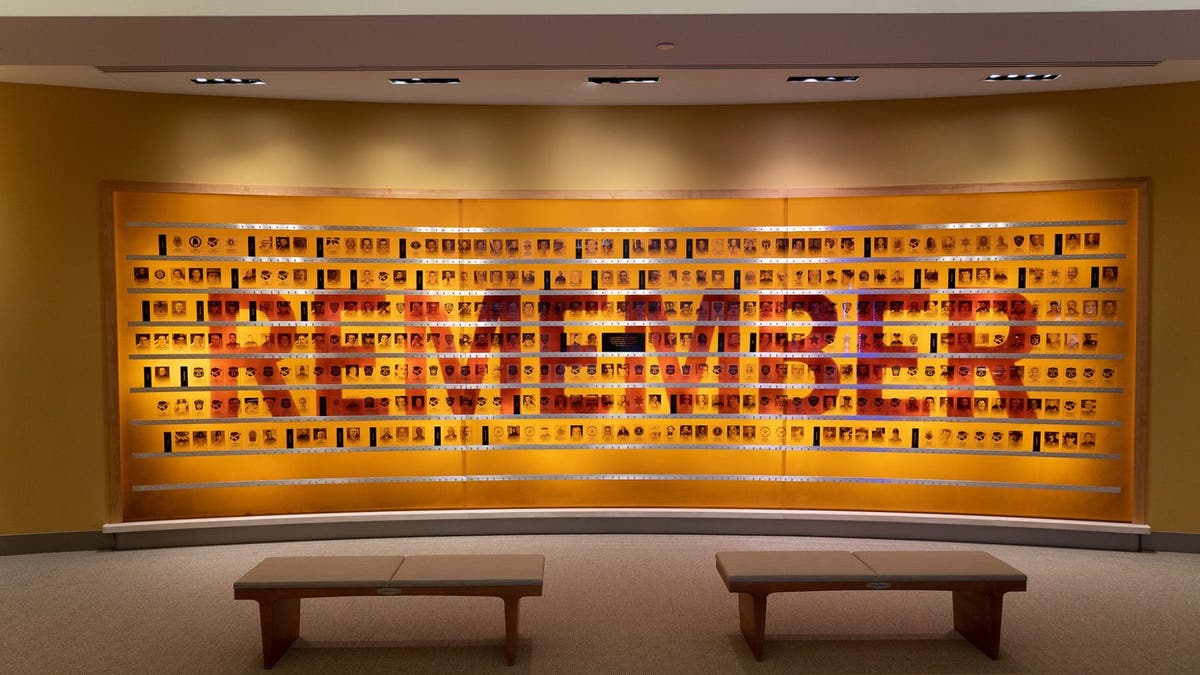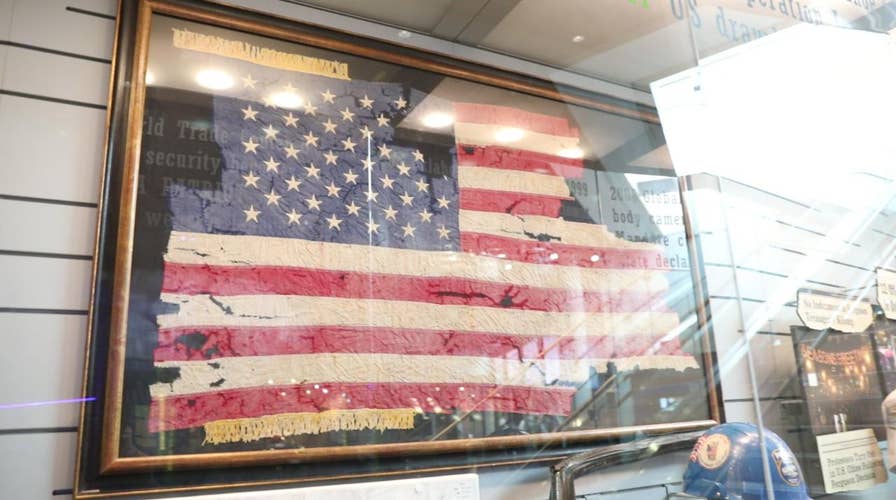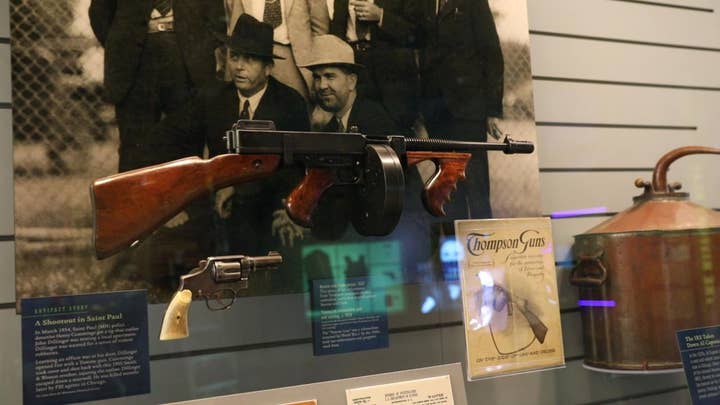Walk in the shoes of cops at National Law Enforcement Museum
High-tech exhibits, fascinating artifacts and pop-culture memorabilia take center stage at the new museum.
U.S. Park Police officers Donald Usher and Eugene Windsor heroically risked their lives after Air Florida Flight 90 crashed into Washington D.C.’s 14th Street Bridge, killing 74 people, on January 13, 1982.
The weather was so bad that emergency personnel had a difficult time reaching victims in the frigid waters of the Potomac River. Still, Usher and Windsor got into a helicopter — known as “Eagle One” — and saved five passengers through a dangerous water rescue operation.
“That helicopter hangs from the rafters of this museum,” CEO Craig Floyd told Fox News in an interview ahead of this weekend’s opening of the National Law Enforcement Museum in Washington.
WHY THE NATIONAL LAW ENFORCEMENT MUSEUM WILL BE A 'MUST-SEE DESTINATION' FOR VISITORS TO DC
Fox News was given an early tour of the soon-to-be opened museum this week by Rebecca Looney, the senior director of exhibits and programs, as workers placed the finishing touches on the exhibits.
“One of the first things visitors are going to see when they come to the National Law Enforcement Museum is this pickup truck,” Looney said, pointing to the four-wheel-drive truck driven by Arkansas Game and Fish Wildlife Officer Michael Neal in 2010. “It’s in pretty rough shape.”
Neal was praised for heroism after using the vehicle to stop two men who shot and killed two police officers during a routine traffic stop. Amidst gunfire, Neal rammed his truck into the van of the suspects, before police killed the shooters. That bullet-riddled truck is now on display in the main hall.
The museum also displays other modes of transportation used by officers, including a patrol car from the Indiana State Police — and even a motorcycle used by an undercover officer infiltrating a gang.
“We have a Harley that an ATF officer rode for two and a half years while he was undercover with the Sons of Silence motorcycle gang,” Looney said. That officer, Blake Boteler, went undercover from 1997 to 1999, and ultimately helped to secure the arrest of 58 gang members.
But Floyd calls the museum’s Hall of Remembrance the “heart and soul” of the building. The solemn room displays photos of officers killed in the line of duty, as well as items left in memory of fallen officers at D.C.’s National Law Enforcement Officers Memorial Park, which sits right across the street.
“This wall … has portraits of every officer that was added to the memorial this year,” Looney said.

Each year, the museum's moving Hall of Remembrance will display the names — and photos, if possible — of the fallen officers added to the memorial across the street. (John Harrington)
The museum has a massive collection of artifacts relating to American law enforcement, dating back to colonial times. The curators also obtained more than 5,000 items from former FBI director J. Edgar Hoover’s personal estate, including items from his office.
“There’s a lot of controversy about Hoover, but there’s no doubt that he had a huge impact on law enforcement in this country,” Looney said. “And one of the coolest things we have from him is the desk.”
The museum’s Time Capsule displays other historical pieces, including mobster Al Capone’s revolver, artifacts from the assassination of Sen. Robert F. Kennedy in 1968, and items from the September 11, 2001 terror attacks — up to and including the wands used by TSA officials at airports in the aftermath.“As we go through this history, we look at these major moments and emphasize how that had an impact on law enforcement,” Looney explained.
There's also an interactive 911 Emergency Operator exhibit, alongside the red phone that received the very first 911 emergency call in Haleyville, Ala. “[Haleyville] kept the phone and they decided to loan it to us — long-term loan,” Floyd said.
The museum also brought in a real jail cell from a now-closed prison in Lorton, Va., complete with a toilet, cot, and even the cell's steel bars.
“The interesting part was cutting out all 25 feet of steel,” Looney said of moving the jail cells.
Other parts of the museum are dedicated to teaching visitors about the different types of work a law enforcement officer is expected to perform on a daily basis. The museum's Day in the Life exhibit, for instance, lets visitors watch videos from a typical day of patrol officers in three areas — Lake Minnetonka in Minnesota; Atlanta; and the Arizona Highways — and fast-forward or rewind through their entire shifts.
“We think of this as kind of the anti-reality TV show,” Looney said.
Just beyond that is the Take the Case exhibit, where visitors can examine evidence from real-life cases and work through three simulated crime scenes. And on display is evidence from high profile cases, like the DC sniper attacks in 2002, including a bullet from the sniper’s Bushmaster rifle.
There's also a mockup "interrogation room," where real footage of police interrogations is shown and analyzed by an FBI agent.
“One of the things I think people have a lot of questions about is all the equipment that law enforcement officers use,” Looney added. So, to get a feel for what being a law enforcement officer actually entails, the Tools of the Trade exhibit showcases everything a New York Police Department officer would wear, like a bullet-resistant vest, handcuffs, a Glock 19, a trauma kit, batons, pepper spray and ammunition.
There's also an Officer Stories section, featuring one-minute videos from different officers about their most trying, emotional, and proudest moments.
“So in one minute, you get this flavor of what it’s like to be an undercover cop, what it’s like to report the death of someone’s loved one, what it’s like to work in the FBI in the forensics area,” Looney said.
The museum also pays homage to crime television shows and movies – the way many people have learned about law enforcement. The collection includes a wide range of memorabilia, such as the black hat worn by character Jethro Gibbs (played by Mark Harmon) on the TV show “NCIS”; a sweatshirt worn by Jack Bauer (played by Keifer Sutherland) in the hit show “24”; a DNA kit from the show “CSI: Crime Scene Investigation”; an evidence collection kit used on “Law and Order: Criminal Intent”; and, of course, a life-sized RoboCop.
The museum, located at 444 E Street N.W., opens Saturday. General admission tickets are $21.95 for adults, $16 for seniors, $14.50 for military, veterans, law enforcement and students (with valid ID) and $12 for children under the age of 12.
FOLLOW US ON FACEBOOK FOR MORE FOX LIFESTYLE NEWS
For more, including ticketing information, visit the official site of the National Law Enforcement Museum.


